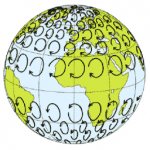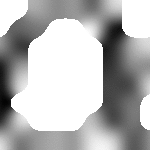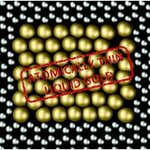Physics

There was something unusual about our recent research collaboration on the science of light, colors and the perception of rainbows: one member of the team wrote his best science in the 1220s.
The Ordered Universe Project sees humanities scholars and scientists come together to carefully read the 13th century scientific treatises of the English polymath Robert Grosseteste. It was set up in the hope that the work’s technical content might receive a deeper analysis than previous scholarship.
What no one expected was that the scientists in our team would be inspired to do new work as a result.…

The light we receive from the sun is composed of all visible frequencies, among others, and it therefore appears white to our natural detection system - the human eye. Apparently, evolution caused us to develop a vision which works best at the center of the frequency spectrum emitted by the Sun.
That notwithstanding, I am sure that if you ask the question "what colour is the Sun" to the average Joe, you will get an equal share of "white" and "yellow", and maybe some "red" answers. Besides, who among us has never painted a red Sun in a blue sky as a child ?
Physics allows us to…

A note to the reader: This article requires following special instructions to watch the videos below. It's also recommended you be on a desktop computer, but if you are on a mobile device (which won't let you play two videos simultaneously), simply partner with a friend to play the second video.
... ...
There is a long-standing urban legend claiming toilets situated in the Northern Hemisphere flush the draining water with a counter-clockwise rotation, while in the Southern Hemisphere it all spins down clockwise. The Coriolis effect — a real …

There are multiple conservation laws in nature meaning these are considered to be scientific truths which are fundamental and foundational to all modern science as we know it.
Perhaps the most familiar or common conservation law in science is that of the conservation of energy.
What this means is that energy can neither be created nor destroyed, only changed from one form to another.
There are many different types of energy which can be converted back from one form to another. Most energy is in the form of potential and kinetic energy. Examples of potential energy are weights lifted…

Most models of quantum gravity propose or predict that at very short distances space is a frothing foam where distance and time intervals themselves fluctuate rapidly. These models predict that if light can travel long distances there will be a cumulative effect due to photons from a source gaining slightly different phases. The precise nature of the effect, the underlying mechanisms would vary but otherwise they would be probed by the same observation of quasars, the most distant short wavelength light we can observe.
The observations were taken and the data analyzed for this…

The second infn school of statistics took place this week in the nice "green island" of Ischia, in the gulf of Naples, Italy. Organized by the INFN section of Naples, the school aims at training Ph.D. students and post-graduates in the foundations and the applications of the statistical methods most used nowadays in particle physics, nuclear physics, and astrophysics.
As one of the members of the scientific advisory committee (together with Luca Lista, who took care of the local organization with the local organizing committee, and Riccardo Faccini and Giovanni Punzi), I took part in the…

Water behaves in mysterious ways, especially below zero before it turns into ice. Physicists have recently observed the spontaneous first steps of the ice formation process, as tiny crystal clusters as small as 15 molecules start to exhibit the recognizable structural pattern of crystalline ice.
A new study finds that liquid water does not become completely unstable as it becomes supercooled, prior to turning into ice crystals, because of an energy barrier for crystal formation in which supercooled water's compressibility continues to rise. Interestingly, liquid water becomes easier to…

Here is a wordy topic which also happens to be rich with
physics and foundational in almost every aspect of engineering. The 2nd law of thermodynamics states that,
you cannot build a device capable of extracting heat from something to do work
without having some residual useless heat output. Perhaps more simply stated, you cannot
convert a given amount of heat energy into exactly the same amount of
work. There will always be some
frictional type losses that reduce the total amount of energy available for work
in any energy conversion process.
These frictional losses play a…

Computer simulations have predicted a new phase of matter: atomically thin two-dimensional liquid.
The discovery of graphene a decade ago was the first proof of a free-standing two-dimensional (2D) solid phase and new quantum molecular dynamics simulations of nanoscale gold patches suspended in graphene pores predict we may get the same thing in a liquid: an atomically thin, free-standing 2-D liquid phase.
That pushes the boundaries of possible phases of materials but 2-D materials were considered impossible until the discovery of graphene and the exceptional planar stability of gold due to…

Yesterday I posed a question - Are the first collisions recorded by the LHC running at 13 TeV the highest-energy ever produced by mankind with subatomic particles ? It was a tricky one, as usual, meant to think about the matter.
I received several tentative answer in the comments thread, and thus answered there. I paste the text here as it is of some interest to some of you and I wish it does not go overlooked.
---
Dear all,
thank you for your thoughts. As it often happens, the global common knowledge of a pool of readers exceeds the wisdom of the writer of this column...
As many have…